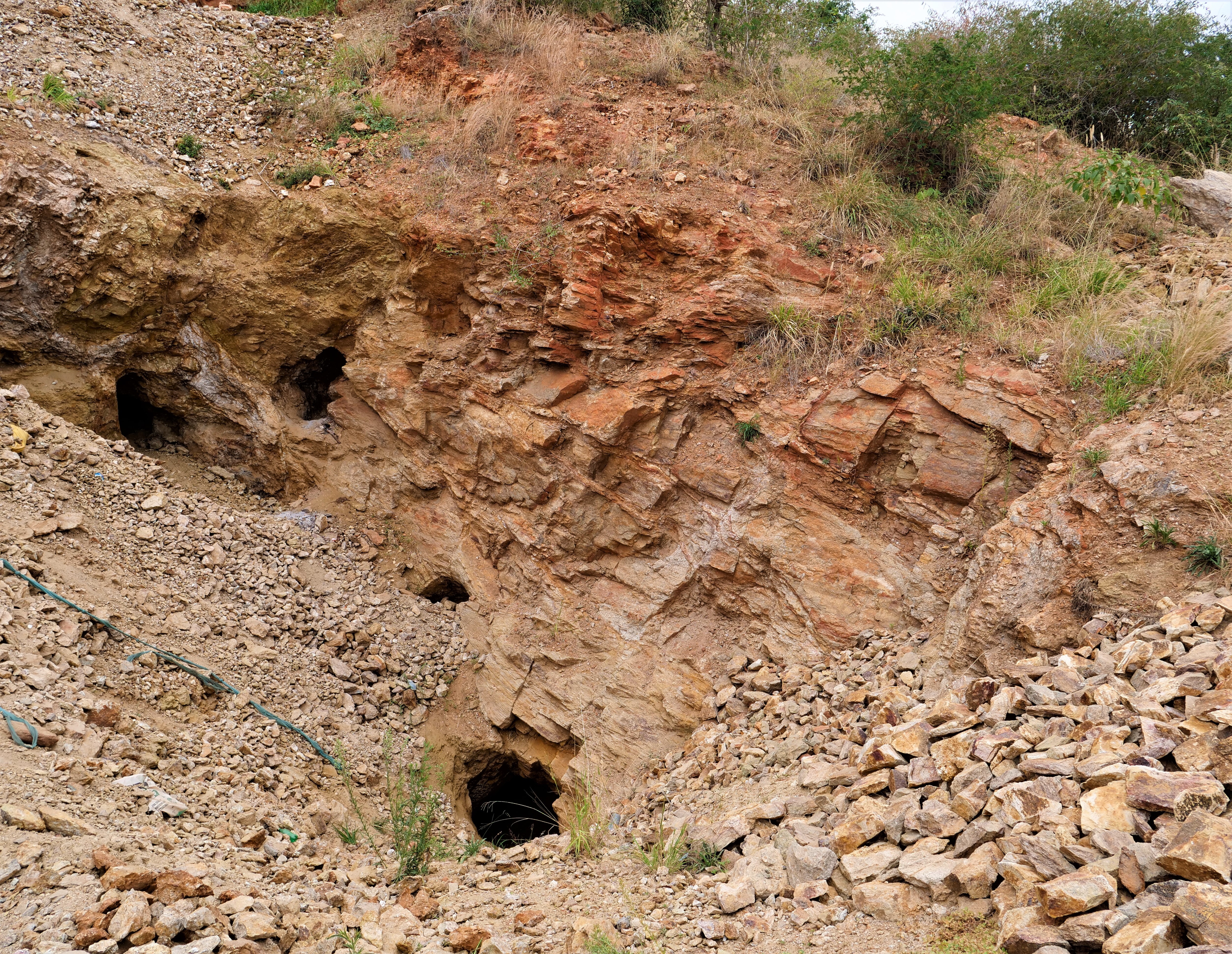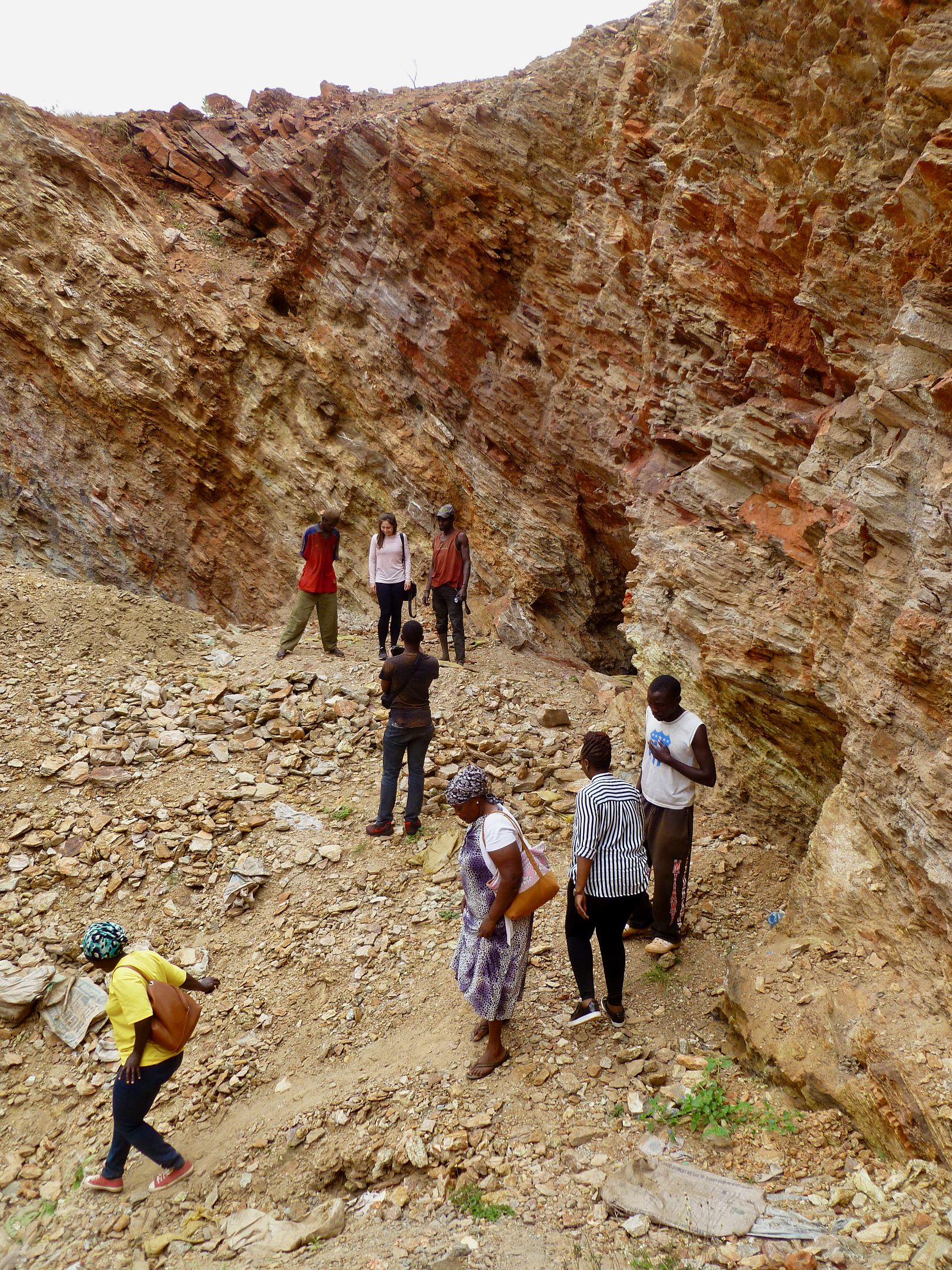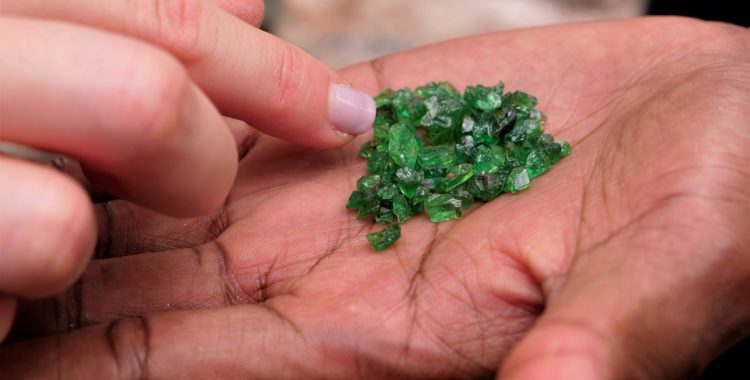Have you ever been to an artisanal mine site? I hadn’t until this summer. After one year at Levin Sources, immersed in reports on artisanal and small-scale mining (ASM), advising clients on sourcing from ASM and attending international conferences on the subject, I got the chance to visit two artisanal tsavorite sites in Taita-Taveta county, Kenya.
ASM is often spoken about but often misunderstood. Visiting mine sites and speaking to miners challenged any preconceptions I had held. Of course, I can’t claim to now fully understand ASM, its drivers and impacts, or do justice to the stories of those I met: artisanal miners, diggers, mine site owners, and traders. But I hope to elevate their voices and encourage those who define what ‘responsible’ mining and sourcing means for ASM to listen.

The mines are run by a collective of women, some of whom guided us to the sites. As we approached the remote, rocky landscape, we were met by several young men. I learnt that they were diggers who live and work at the nearby tsavorite pits. Following introductions, they accompanied us to the first mine pit where we began the climb down, supporting each other over the steep, uneven terrain.
We emerged on the edge of the pit, finding our footing along its narrow perimeter of loose rocks. It was about 20m wide, and at least 20m deep. We learnt it had taken many years of hand-digging to reach the tsavorite deposits. One of the diggers began describing a typical day’s work. With only a small pickaxe and headtorch they descend deep into the dark, narrow, hand-chiselled doorways in the rockface. “After a few hours, it can become hard to breathe in the shaft, but I’m used to it,” he told us. There are no structures to support the tunnels, nor is there ventilation equipment for the shafts. He gestured to one of the openings where a digger emerged, his clothes coated in burnt sienna dust from the rocks. A few moved to greet him. Suddenly, someone lost their footing, triggering a small rockfall down the pit and into a 20m deep mine shaft below.

After a moment of silence, and having established that everyone was ok, I began asking another digger their thoughts on the safety conditions there. “Yes, it’s difficult. We’ve had a few deaths and several injuries over the last few years,” he shared. There are hundreds more accidents happening during the extraction of gemstones in Kenya alone. “We don’t have resources to buy things like hard hats, but we want them,” he told me. Having learnt about a nearby larger south Asian owned mine with more advanced health and safety standards, I asked him if working there would appeal to him. “No, because I would lose my independence.” He went on to explain how the company “makes” diggers participate in the Islamic salat (prayer) times regardless of their beliefs.
Later, another digger told me he also prefers artisanal mining, where he’s paid for what he mines, over the possibility of receiving a regular fixed wage at a larger mine. He’d been mining artisanally for 15 years; his father died when he was 16 and left six siblings for him to support. I asked him about other sources of income, as so often it is assumed that people like him should be encouraged towards ‘alternative livelihoods’ such as farming. “Mining is the best for me, there is not much else,” he said without hesitation. ASM offers him the opportunity and captivating promise of one day discovering a gemstone that would transform his fortunes. Like many others, he knows he is risking his life every day, motivated by a fusion of necessity and opportunity.

I’ve been reflecting on the discussion surrounding the responsible mining and sourcing of gemstones, and the initiatives that have been designed. Would the diggers and miners I met have the same view on what is ‘responsible’ as their downstream buyers, or those of us who buy gemstone jewellery? Are we engaging enough with the miners themselves, and fully including their views and perspectives when we design ‘responsible’ supply chains? Or is our tendency to assume we already know what they want and need? Improving health and safety is just one example. For those I met, it seemed to be one of their main challenges. And yet, in many international discussions concerning the responsible sourcing of gemstones, the focus is mainly on ‘conflict minerals’ or traceability. Having seen and heard what ‘poor health and safety’ at ASM sites can mean in reality, there’s no question for me that it should be one of the central issues addressed by any responsible sourcing initiative. We need to work with artisanal diggers and miners to find ways to improve methods of extraction and processing. Above all, the overarching takeaway from my visit is clear. We must take a much more collaborative and participatory stance when it comes to defining what ‘responsible’ means, and also when it comes to investing in and ‘improving’ ASM. It matters what the market wants, but surely what the miners want is even more important; it’s their lives, their environments, their futures that are directly affected by the conditions set - or not set - by the market.



